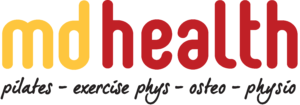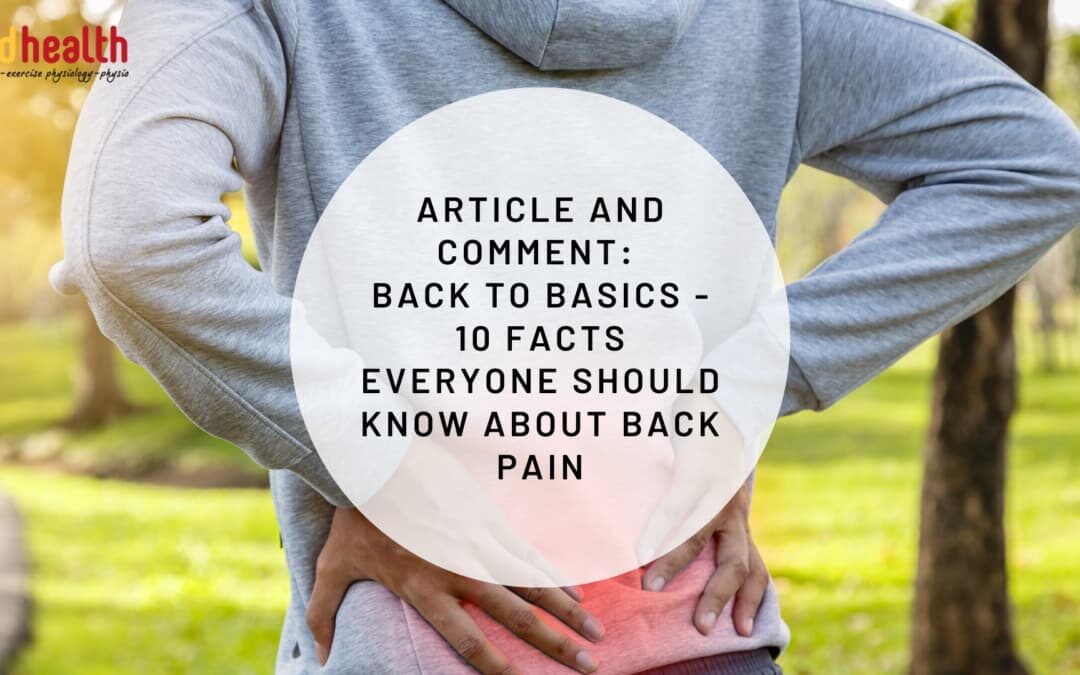The below summary of a recently published journal article presents some SUPER-RELEVANT and SUPER-IMPORTANT information to ANYONE who currently has OR has ever had low back pain.
Low back pain (LBP) is the leading cause of disability worldwide, and is often associated with costly, ineffective and sometimes harmful or perpetuating care.
Low back pain is significantly affected by negative individual beliefs, which can be reinforced with negative media, industry groups, and often even by well-meaning clinicians.
Below are 10 unhelpful beliefs/myths about low back pain (LBP):
- Myth 1: LBP is usually a serious medical condition.
- Myth 2: LBP will become persistent and deteriorate in later life.
- Myth 3: Persistent LBP is always related to tissue damage.
- Myth 4: Scans are always needed to detect the cause of LBP.
- Myth 5: Pain related to exercise and movement is always a warning that harm is being done to the spine and a signal to stop or modify activity.
- Myth 6: LBP is caused by poor posture when sitting, standing and lifting.
- Myth 7: LBP is caused by weak ‘core’ muscles and having a strong core protects against future LBP.
- Myth 8: Repeated spinal loading results in ‘wear and tear’ and tissue damage.
- Myth 9: Pain flare-ups are a sign of tissue damage and require rest.
- Myth 10: Treatments such as strong medications, injections and surgery are effective, and necessary, to treat LBP
These beliefs often make back pain worse and cause back pain to become more long-term and debilitating, leading sufferers down the path of fear-avoidance behaviours and physical deterioration.
Instead, here are a few helpful, scientifically-proven FACTs about back pain that are important to consider:
- Fact 1: LBP is not a serious life-threatening medical condition.
- Fact 2: Most episodes of LBP improve, and LBP does not get worse as we age.
- Fact 3: A negative mindset, fear-avoidance behaviour, negative recovery expectations, and poor pain coping behaviours are more strongly associated with persistent pain than is tissue damage.
- Fact 4: Scans do not determine prognosis of the current episode of LBP, the likelihood of future LBP disability, and do not improve LBP clinical outcomes.
- Fact 5: Graduated exercise and movement in all directions is safe and healthy for the spine.
Fact 6: Spine posture during sitting, standing and lifting does not predict LBP or its persistence. - Fact 7: A weak core does not cause LBP, and some people with LBP tend to over-tense their ‘core’ muscles. While it is good to keep the trunk muscles strong, it is also helpful to relax them when they aren’t needed.
- Fact 8: Spine movement and loading is safe and builds structural resilience when it is graded.
- Fact 9: Pain flare-ups are more related to changes in activity, stress and mood rather than structural damage.
- Fact 10: Effective care for LBP is relatively cheap and safe. This includes: education that is patient-centred and fosters a positive mindset, and coaching people to optimise their physical and mental health (such as engaging in physical activity and exercise, social activities, healthy sleep habits and body weight, and remaining in employment)
Please remember these facts if you ever have an episode of low back pain, and remember, it will improve over time! Seeing a Physiotherapist or Accredited Exercise Physiologist here at MD Health who use an active, exercise-based approach to managing low back pain can often be a key step in your return to full function.
Want to know more?
If you want more information regarding this article or would like to book for a FREE full body assessment with one of our Physiotherapists or Exercise Physiologists, call us on 9857 0644 or email us at admin@md-health.com.au
Back to basics: 10 facts every person should know about back pain
Low back pain (LBP) is the leading cause of disability worldwide, and is often associated with costly, ineffective and sometimes harmful care.
What drives disability and poor care? Unhelpful beliefs about LBP are associated with greater levels of pain, disability, work absenteeism, medication use and healthcare seeking.




